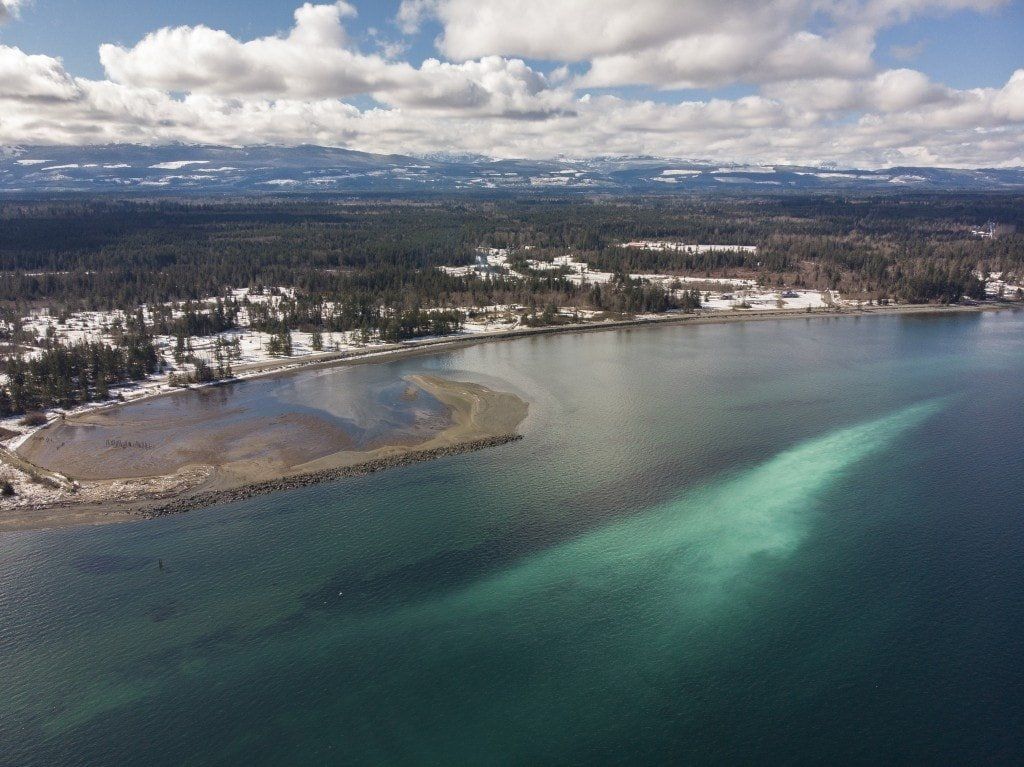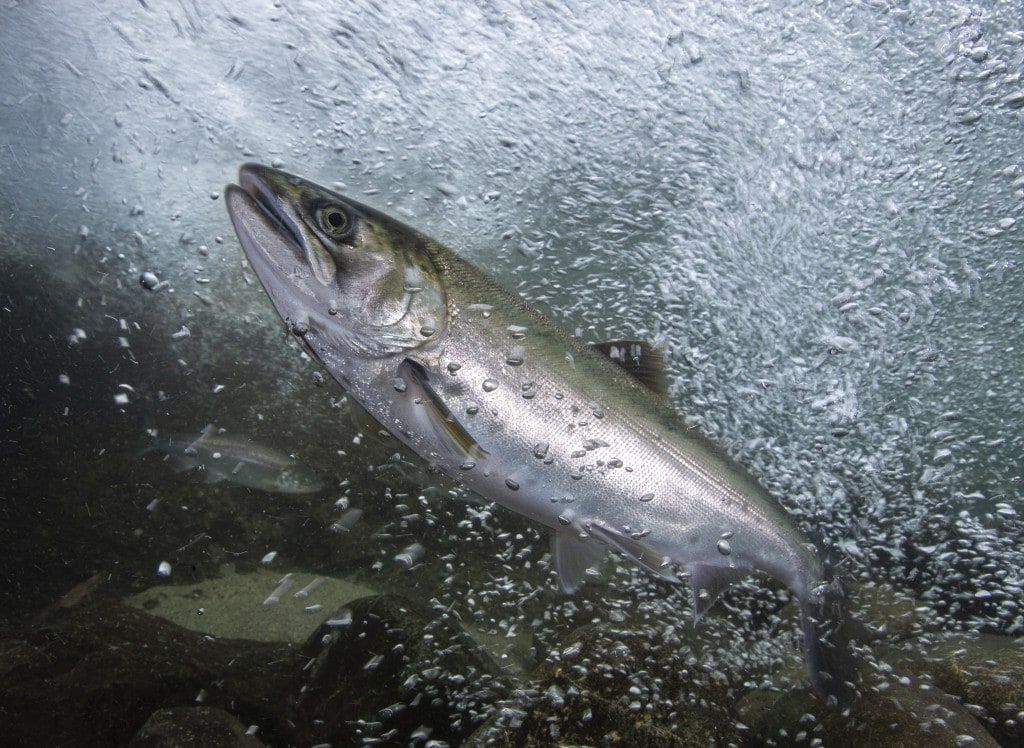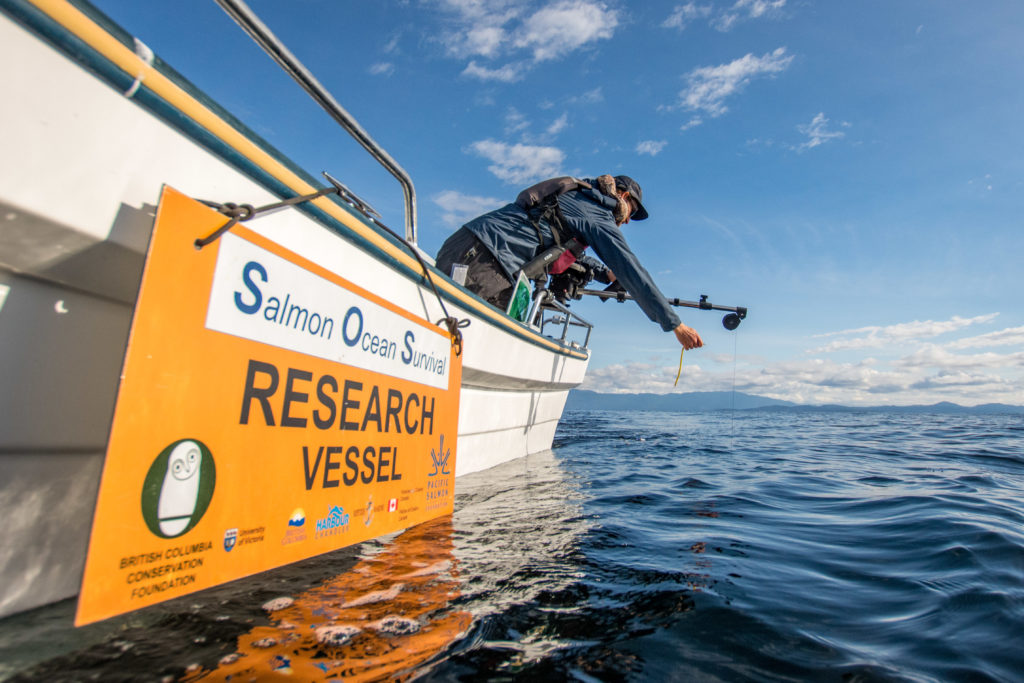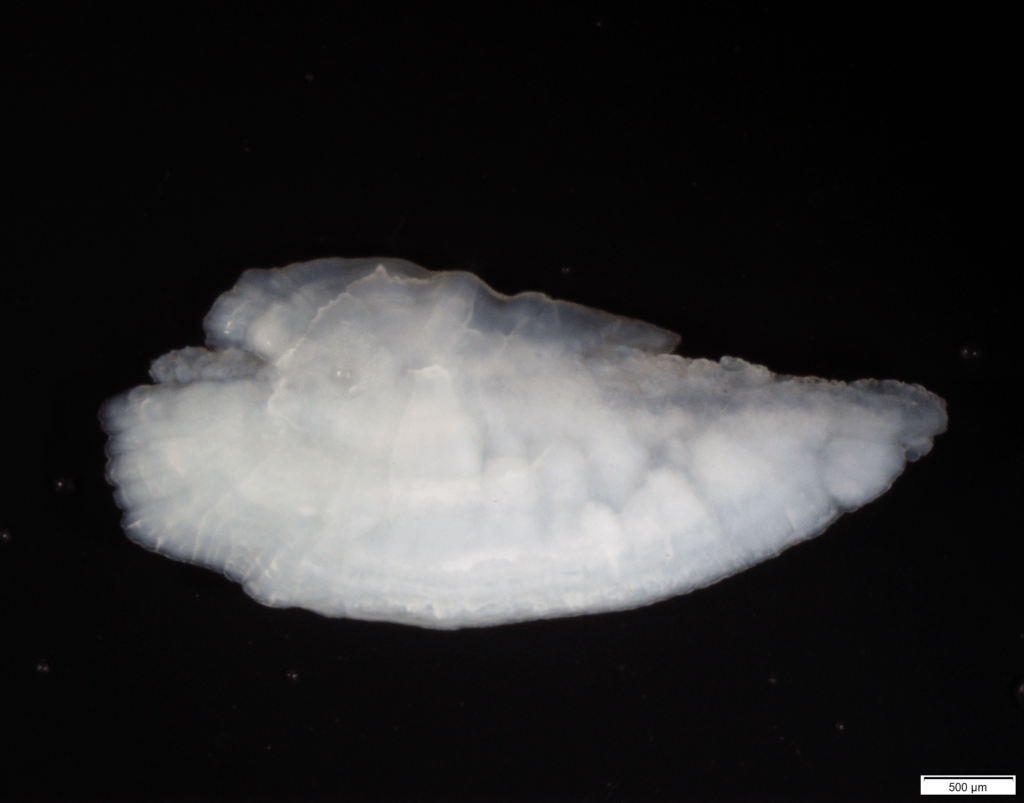
Otoliths are small mineralized ear bones that form throughout a fish’s life incorporating chemicals and elements from the environment. Each fish’s otolith carries a unique microchemical signature and using otolith analysis, researchers will be able to address many important questions related to Pacific salmon and Pacific herring migrations. Below are brief backgrounds and summaries of each project.
Pictured: Chinook otolith (credit: Micah Quindazzi)
Pacific salmon generally migrate at three points during their lives, as juveniles migrating from the freshwater streams and rivers to nearshore and estuarine areas, as sub-adults migrating along the coast or offshore, and as adults returning to their stream of origin to spawn. While there has been much research dedicated to the first and third life stage migrations, the sub-adult marine migration remains largely a mystery due to the inherent challenge of tracking salmon through this phase.
Coho and Chinook salmon of the Salish Sea have distinct migration types for their marine phase. The salmon either stay ‘resident’ within the Salish Sea, or out-migrate to the open ocean – the continental shelf around Washington and Vancouver Island or as far as the Gulf of Alaska. The exact mechanisms and factors, whether genetic or environmental, that go into determining the migration path the salmon end up taking is unknown but this ‘decision’ of sorts has profound implications. Where coho and Chinook grow out and mature influences their size, reproductive capacity as well as the contaminant burden they take on. Contaminants of concern, such as mercury (Hg) and polychlorinated biphenyls (PCBs), can compromise salmon health and fitness and, even more troubling, these contaminants are transferred up the food chain bioaccumulating in those that consume the salmon, such as marine mammals and humans.
Ph.D. student, Micah Quindazzi, will be assessing the applicability of otolith microchemical for tracking the migration of returning coho or Chinook salmon. Previously, applying otolith analysis technology for marine migrations has been challenging due to the commonly used tracer elements being too homogeneous in marine environments. Now, the technology’s precision has improved and other elements have been identified as potential tracers. Mr. Quindazzi will optimize and refine the technique using tagged salmon with a known migration history. Once accurate migration patterns can be identified, the use otolith analysis will be paired with other analyses to determine:
Pacific Herring are a vital part of the food chain in the Strait of Georgia and the Salish Sea and they are of particular importance to salmon. Adult herring make up a significant proportion of Chinook diets and their presence may buffer the risk of predation for juvenile salmon.
In the last four decades, there have been ecosystem level changes within the Strait of Georgia that include shifts in the Pacific herring spawn timing and distribution as well as declines in Chinook and coho salmon survival. Conservation groups have cited a lack of salmon food and alternative prey for salmon predators as causes of declining survival; urging Fisheries and Oceans Canada (DFO) to close the commercial herring fisheries in the Strait of Georgia, despite recent spawner biomass being close to historic levels. Herring in the Strait of Georgia are managed as a single aggregated management unit across a large area. Their sub-population structure is poorly understood. Within the total population, it has been reported that there are non-migratory and migratory individuals, however the variation in migratory behaviours and underlying causes has not been well characterized. All of these uncertainties make it difficult to determine whether shifts in Pacific herring subpopulations and behaviours might be related to salmon declines, and hampers the ability to make effective evidence-based decisions for managing Pacific herring fishery in a way that supports salmon populations.
Master’s student Jessica Qualley is developing and investigating the applicability of cost-effective otolith analysis to detect and differentiate life history types in Pacific herring populations. First, by applying laser ablation inductively coupled plasma mass spectrometry (LA-ICP-MS) to herring otoliths she will characterize variation in migratory life history types within the population. Then, taking the paired otoliths from fish with their migration histories already determined, she will work to develop solution-based mass spectrometry (SO-ICP-MS) method to identify “elemental tags” for alternative migration life history types. If effective, SO-ICP-MS should provide a more efficient, cost-effective indication of migration life history type for application in fishery management and enable research on factors regulating migration life history.
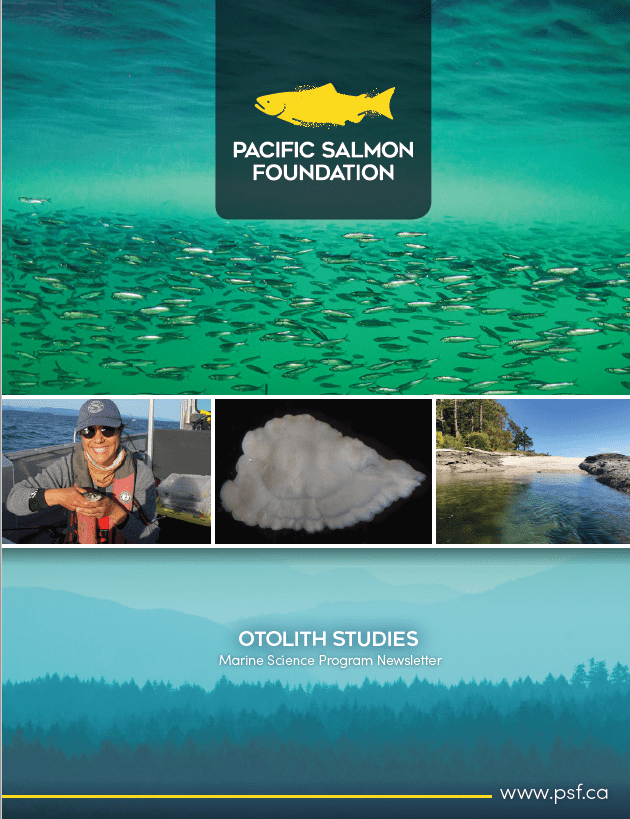
Updates on these projects can be found in this PSF Marine Science Program Newsletter.
